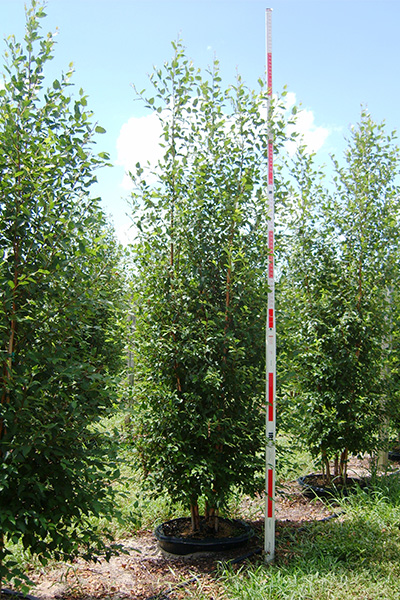Looking Ahead: Why Master Planning Matters
By Shane Pangle, Director of Sales
With a single crop of trees taking as many as 3 – 5 years to be ready to bring to the market, offering a broad plant palette requires long term foresight.

Dura-Heat Riverbirch can be grown quickly and are in high demand in the market
Our Master Planning team examines a multitude of factors, from market demand and genetic diversity to cost of production and alternative cultivars as they chart the course of our farm’s production years in advance. This dedicated team tracks every tree on our farm from seed to sales, using the information to continually improve our plant material offerings. Some crops are phased out to make room for higher performing varieties, while others are brought in to increase our genetic diversity and disease resistance on the farm, all with the goal of growing trees that are healthy, sustainable, and in demand.
At Cherrylake, our greatest resource is our farm.
Our Master Planning team takes into consideration the time it takes to grow each variety of plant material to make use of the space most effectively, with the goal being 100% space utilization at all times. In order to maintain this, there has to be a steady flow of inventory reaching maturity each quarter as well as steady market demand keeping those products headed to the loading dock to ship to projects all across America.
In some cases, slow-growing cultivars with low market demand might be scaled down in production and replaced with a fast-grower like the Dura-heat Riverbirch, which takes up the same amount of space, but will be off the farm in less time, freeing the space for another equivalent sized tree.
Our goal is always to provide the best quality tree to our customers.
 Because our goal is always to provide the best quality tree to our customers, the Master Planning team phases out some trees in order to make room on the farm for similar varieties that are either more attractive, more disease resistant, or both. Our Magnolia line currently features four cultivars: Miss Chloé (cultivated only here on our farm from cuttings of a mother tree here in Groveland), Bracken Brown Beauty, Little Gem, and DD Blanchard Magnolias. After careful consideration, the decision has been made to phase out the DD Blanchard line, leaving more room for the other varieties, which have been consistently more full and beautiful.
Because our goal is always to provide the best quality tree to our customers, the Master Planning team phases out some trees in order to make room on the farm for similar varieties that are either more attractive, more disease resistant, or both. Our Magnolia line currently features four cultivars: Miss Chloé (cultivated only here on our farm from cuttings of a mother tree here in Groveland), Bracken Brown Beauty, Little Gem, and DD Blanchard Magnolias. After careful consideration, the decision has been made to phase out the DD Blanchard line, leaving more room for the other varieties, which have been consistently more full and beautiful.
The DD Blanchard joins the ranks of other retired cultivars, including the Highrise Live Oak, Autumn Gold Bald Cypress, East Palatka Holly, Millennium Oak, and Oakleaf Holly. In their place, we’ve brought on new varieties and sizes to better serve the needs of our customers, including Winged Elms and Wax Myrtles.
Throughout all of this change, our continual goal is to improve the depth and quality of material to build sustainable, beautiful landscapes.
Each challenge is an opportunity to find a new solution (such as a different container size or higher performing variety). Our Master Planning team lives by the value of continuing innovation, providing solutions we can implement now to create a more beautiful, sustainable future.The Master Plan is about more than just tree varieties, however. The container size of each tree can also play a significant role in its effectiveness in the market and the landscape beyond. Our 65 gallon line of Maples, Elms, and Bald Cypress is being replaced by the more compact 45 gallon size. Though the 45 gallon trees will have similar specs (which means the same big impact in the landscape), more can safely fit per truck, which means our customers save on freight without compromising the plant material.

